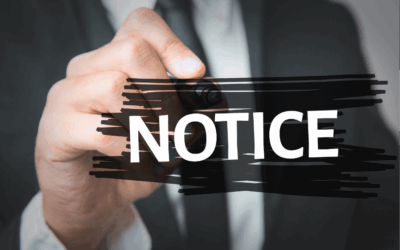If you are a business owner or plan administrator who sponsors a 401(k) or 403(b) plan, there’s an important change on the horizon you’ll want to prepare for. A key change from the SECURE 2.0 Act will soon affect how many employees save for retirement – and how employers administer their plans.
Starting in 2026, higher-paid participants will be required to make their catch-up contributions as Roth, not pre-tax.
This shift may seem minor, but it impacts payroll, plan documents, and compliance. Plan sponsors who don’t prepare could face errors, corrections, and frustrated participants. Now is the time to review your plan and get ready for the Roth catch-up rules.
At Watkins Ross, we help our clients prepare for such fluctuations by providing detailed explanations and assistance. Read on for critical information about your upcoming year.
Secure Act 2.0 Change
The Secure Act 2.0 made an important change for both qualified 401(k) and 403(b) plans regarding catch-up contributions. Even though the final IRS regulations generally apply in 2027, plan sponsors must begin operating in good faith compliance with the new Roth catch-up rule starting in 2026.
Participants earning over $150,000 in FICA wages during the prior calendar year (adjusted annually for cost-of-living) are required to make their catch-up contributions as Roth contributions.
These participants will be referred to as “Highly Paid Individuals,” or HPI.
Who is considered an HPI?
- A participant who, in the prior calendar year, had FICA wages greater than $150,000 from the employer sponsoring the plan. This is Box 3 wages on the W-2.
- Participants with 1065 K-1 income or Schedule C income are not a HPI (these are not considered FICA wages).
Two notes:
- A HPI is not necessarily a highly compensated employee (HCE).
- FICA wages are based on a calendar year, not the plan’s fiscal year.
What You Need to Know
Plan Sponsors will need to make decisions on how to implement the Roth catch-up contributions in the plan document. The plan must allow Roth contributions or amend the plan to allow for Roth contributions.
If the plan does not allow for Roth contributions, HPIs cannot make catch-up contributions, as they would be considered out of compliance. In addition, the plan must permit all eligible catch-up participants to make Roth catch-up deferrals, regardless of FICA wages. Plans that have elected the optional provision of the “Super Catch-Up Contributions” for participants ages 60-63 must apply these same Roth catch-up rules for HPI employees.
A HPI is determined on an employer-by-employer basis. Therefore, if a HPI works for related employers, plan sponsors do not have to aggregate wages. However, the regulations allow plan sponsors to voluntarily aggregate wages in a controlled group, affiliated service group, or predecessor employer for ease of administration.
How to Correct Failures
There are a few methods for correcting failures. You may choose any method, but it must be consistent. The plan must use the same correction method for all similarly situated participants in a plan year.
In addition, the plan must have policies and procedures in place prior to January 1, 2026, that are designed to ensure compliance with the mandatory requirements.
Option #1: Form W-2 Correction
If the employer has not yet issued or filed the participant’s W-2, the employer can reflect the recharacterized contributions as taxable wages on Form W-2. The employer can then move the contributions, plus earnings, from the participant’s pre-tax account to the participant’s Roth account.
Note: Because W-2s are generated the January following the tax year, this would need to be done very quickly at the beginning of the year to ensure the W-2 is corrected in a timely manner.
Option #2: In-Plan Roth Rollover Correction Method
The employer can move the recharacterized deferral, plus earnings, to the participant’s Roth account as an in-plan Roth rollover. Then, report the amount rolled over on Form 1099-R. The deadline to make corrections under this method will depend on which limit the catch-up contribution has exceeded.
For example:
- ADP refunds must be corrected by March 15 of the following year.
- The 402(g) limit must be correct by April 15 of the following year.
- The 415 limit must be corrected 9 ½ months following the end of the plan year (October 15 for calendar year plans).
Option #3: Refund the Deferral
A pre-tax catch-up contribution that should have been Roth can be corrected by refunding the amount (including allocable gain/loss) to the participant. The participant receives a Form 1099-R in the year of correction. This is the only option available if there are no policies and procedures in place.
When Correction Is Not Required
Correction is not required if:
- The amount of the pre-tax contribution that should have been designated as a Roth is $250 or less
- The failure is due to an amended W-2, which was provided after the correction deadline reflecting that the participant was subject to the Roth catch-up rule.
Navigating Roth Catch-Up Challenges
There are two strategies that can assist plan sponsors and HPI participants with navigating the challenges of the Roth catch-up rules.
Strategy #1: Deemed Roth Election
The plan can provide that HPIs have irrevocably elected (permanently chosen) all catch-up contributions be Roth. This is referred to as “deemed election.”
Plans are permitted to apply the deemed election after the participant has reached a limit (402(g), 415 or plan limit).
Notes:
- The plan must provide HPIs with the effective opportunity to opt out of making catch-up contributions.
- Plans must adopt the deemed election in order to use the W-2 and in-plan Roth rollover correction method.
Strategy #2: Prior Roth Contributions
If a participant has previously made Roth deferrals within the same calendar year that the catch-up arises, those deferrals can count toward satisfying the Roth catch-up requirement. This is true even though the previous deferrals were not themselves catch-up contributions.
Communicating With Your Team
Plan Sponsors should communicate these new rules to their employees and HPI participants who are catch-up eligible. Plan Sponsors should also coordinate with their payroll provider, recordkeeper and third-party plan administrator as soon as possible. You will need to update systems, understand responsibilities and facilitate the changes necessary to operationally comply with the Roth catch-up provision.
Staying compliant as plan rules change can be stressful. At Watkins Ross, we support employers and plan administrators to ensure plans remain correct and organized. Please do not hesitate to call (616-456-9696) or email us with any questions you may have!



